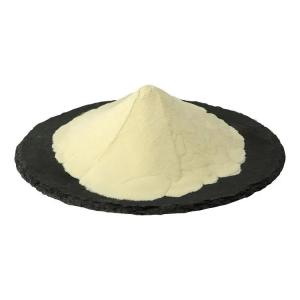News list
News Center
Hot Product
News
Phosphoric acid and healthy food system innovations
Time:2025-10-22
1. Introduction
Phosphoric acid (H₃PO₄) plays a versatile role in the modern food system, linking chemistry, technology, and nutrition science. As global demand grows for healthier and more sustainable food products, innovations involving phosphoric acid are reshaping how foods are formulated, processed, and preserved. It serves as both a traditional food additive and a component of emerging technologies that support quality, safety, and sustainability in the food supply chain.
2. Chemical Background and Industrial Relevance
Phosphoric acid is a colorless, moderately strong inorganic acid derived mainly from phosphate rocks. It is widely used across the food, beverage, and agricultural industries due to its acidity-regulating properties and chemical stability. In recent years, researchers and manufacturers have explored how this compound can contribute to health-oriented product design and sustainable manufacturing methods, balancing functionality with nutritional awareness.
3. Role in Food Innovation
In the field of food innovation, phosphoric acid continues to support advances in formulation and quality control.
Acidity and flavor balance: It helps achieve precise pH levels that preserve freshness and stability.
Functional ingredient systems: Phosphoric acid contributes to the development of emulsifiers and stabilizers that improve food texture without the need for excessive additives.
Nutrient management: In combination with other phosphate compounds, it plays a role in nutrient delivery and mineral balance within certain food systems.
These characteristics make it a reliable ingredient for reformulating processed foods with improved nutritional profiles.
4. Supporting a Healthy Food System
Healthy food system innovations often aim to reduce harmful additives, lower environmental impact, and improve transparency in production. Phosphoric acid fits within this movement through:
Cleaner production technologies: New manufacturing methods reduce impurities and enhance the purity of food-grade phosphoric acid.
Controlled formulation: Careful use in foods ensures safety and consistency while maintaining taste and stability.
Integration with sustainable agriculture: As a source of phosphorus, it also supports agricultural productivity, connecting farm-level nutrient cycles with food manufacturing systems.
5. Research and Development Directions
Ongoing research explores bio-based phosphorus recovery, circular economy models, and precision food formulation involving phosphoric acid. Scientists are examining how recycled or renewable sources of phosphate can reduce waste and environmental impact. At the same time, advances in food science are finding ways to minimize additive use while maintaining product quality, aligning with global goals for healthier diets.
6. Global Perspectives and Collaboration
Food system innovations involving phosphoric acid depend on international collaboration between academia, industry, and regulatory agencies. Organizations around the world are updating safety assessments, refining food additive guidelines, and encouraging responsible use in processed foods. Such cooperation ensures that innovations remain aligned with both public health standards and sustainability objectives.
7. Conclusion
Phosphoric acid continues to evolve from a simple food additive into a component of next-generation food system innovation. Its role extends beyond acidity regulation—it is part of a larger effort to create healthier, safer, and more sustainable food solutions. As global food systems adapt to meet new nutritional and environmental goals, phosphoric acid will remain a key element linking scientific research with practical progress in food technology.
Phosphoric acid (H₃PO₄) plays a versatile role in the modern food system, linking chemistry, technology, and nutrition science. As global demand grows for healthier and more sustainable food products, innovations involving phosphoric acid are reshaping how foods are formulated, processed, and preserved. It serves as both a traditional food additive and a component of emerging technologies that support quality, safety, and sustainability in the food supply chain.
2. Chemical Background and Industrial Relevance
Phosphoric acid is a colorless, moderately strong inorganic acid derived mainly from phosphate rocks. It is widely used across the food, beverage, and agricultural industries due to its acidity-regulating properties and chemical stability. In recent years, researchers and manufacturers have explored how this compound can contribute to health-oriented product design and sustainable manufacturing methods, balancing functionality with nutritional awareness.
3. Role in Food Innovation
In the field of food innovation, phosphoric acid continues to support advances in formulation and quality control.
Acidity and flavor balance: It helps achieve precise pH levels that preserve freshness and stability.
Functional ingredient systems: Phosphoric acid contributes to the development of emulsifiers and stabilizers that improve food texture without the need for excessive additives.
Nutrient management: In combination with other phosphate compounds, it plays a role in nutrient delivery and mineral balance within certain food systems.
These characteristics make it a reliable ingredient for reformulating processed foods with improved nutritional profiles.
4. Supporting a Healthy Food System
Healthy food system innovations often aim to reduce harmful additives, lower environmental impact, and improve transparency in production. Phosphoric acid fits within this movement through:
Cleaner production technologies: New manufacturing methods reduce impurities and enhance the purity of food-grade phosphoric acid.
Controlled formulation: Careful use in foods ensures safety and consistency while maintaining taste and stability.
Integration with sustainable agriculture: As a source of phosphorus, it also supports agricultural productivity, connecting farm-level nutrient cycles with food manufacturing systems.
5. Research and Development Directions
Ongoing research explores bio-based phosphorus recovery, circular economy models, and precision food formulation involving phosphoric acid. Scientists are examining how recycled or renewable sources of phosphate can reduce waste and environmental impact. At the same time, advances in food science are finding ways to minimize additive use while maintaining product quality, aligning with global goals for healthier diets.
6. Global Perspectives and Collaboration
Food system innovations involving phosphoric acid depend on international collaboration between academia, industry, and regulatory agencies. Organizations around the world are updating safety assessments, refining food additive guidelines, and encouraging responsible use in processed foods. Such cooperation ensures that innovations remain aligned with both public health standards and sustainability objectives.
7. Conclusion
Phosphoric acid continues to evolve from a simple food additive into a component of next-generation food system innovation. Its role extends beyond acidity regulation—it is part of a larger effort to create healthier, safer, and more sustainable food solutions. As global food systems adapt to meet new nutritional and environmental goals, phosphoric acid will remain a key element linking scientific research with practical progress in food technology.
Previous:Phosphoric acid in nutrition education materials
Next:None


 CN
CN





